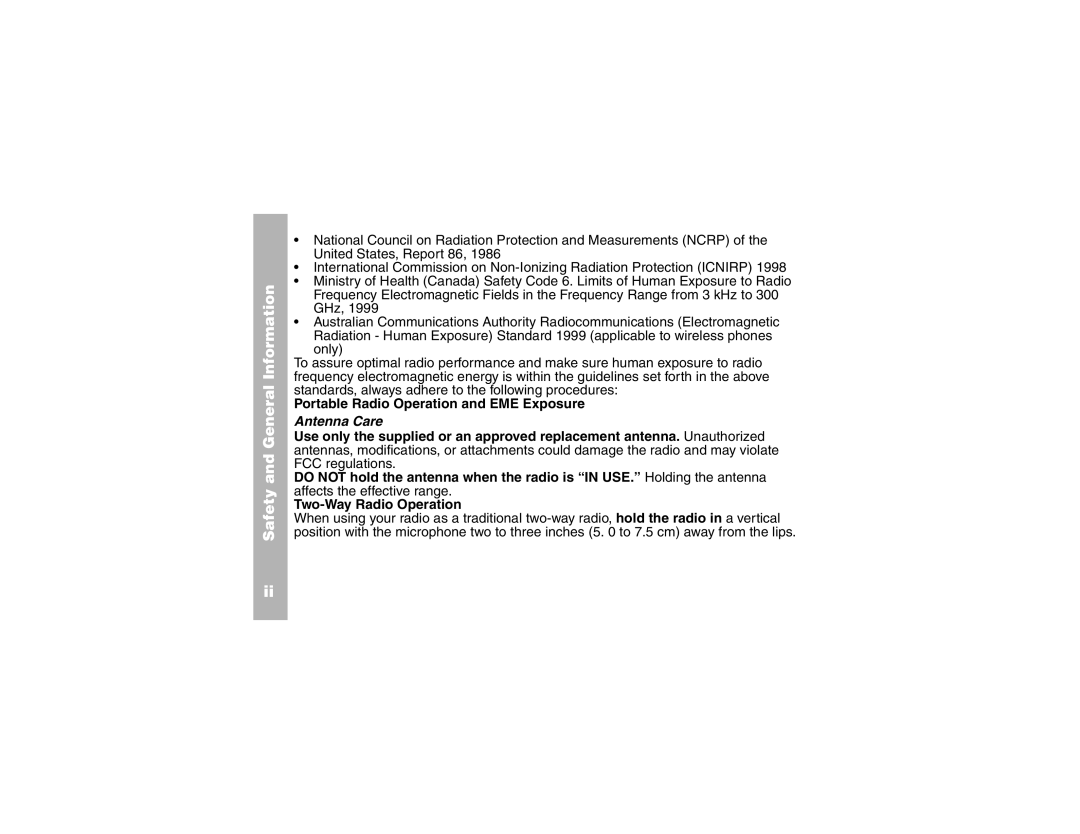Safety and General Information
•National Council on Radiation Protection and Measurements (NCRP) of the United States, Report 86, 1986
•International Commission on
•Ministry of Health (Canada) Safety Code 6. Limits of Human Exposure to Radio Frequency Electromagnetic Fields in the Frequency Range from 3 kHz to 300 GHz, 1999
•Australian Communications Authority Radiocommunications (Electromagnetic
Radiation - Human Exposure) Standard 1999 (applicable to wireless phones only)
To assure optimal radio performance and make sure human exposure to radio frequency electromagnetic energy is within the guidelines set forth in the above standards, always adhere to the following procedures:
Portable Radio Operation and EME Exposure
Antenna Care
Use only the supplied or an approved replacement antenna. Unauthorized antennas, modifications, or attachments could damage the radio and may violate FCC regulations.
DO NOT hold the antenna when the radio is “IN USE.” Holding the antenna
affects the effective range.
Two-Way Radio Operation
When using your radio as a traditional
ii
